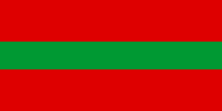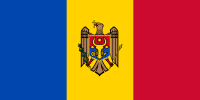Greater Ukraine


Greater Ukraine (Ukrainian: Велика Україна; Velyka Ukrayina) or United Ukraine (Ukrainian: Соборна Україна; Soborna Ukrayina) refers to an irredentist concept of the territory claimed by some Ukrainian nationalist groups outside the Republic of Ukraine which are considered part of national homeland by Ukrainians, based on the present-day or historical presence of Ukrainian populations in those areas.
History
Rise of nationalism
The 10 commandments of the Ukrainian People's Party (1902–1907) were developed by Ukrainian nationalist, the leader of UPP Mykola Mikhnovsky in 1904. These commandments were kind of honor code for the party. They called for a one, united, indivisible, from the Carpathians to the Caucasus, independent, free, democratic Ukraine – a republic of working people.[1]
Claimed regions
Since Mikhnovsky the idea of ‘Ukrainian Independent United State’ (Ukrainian: Українська Самостійна Соборна Держава Ukrainska Samosiyna Soborna Derzhava) has been a key nationalist slogan, but many would argue that the ‘unification’ (соборність sobornist’) of Ukrainian lands was partially completed in 1939–45.
Today’s would-be Ukraina irredenta is mainly in the east, on the territory that is now part of ![]() Russian Federation:
Russian Federation:
- Starodub region north of Chernihiv
- the south-eastern parts of Voronezh
- Belgorod, Kursk and Rostov oblasts
- Kuban region
In the west, some radical nationalists would also covet the following territories:
- left bank of river Dniester in Moldova (
 Transnistria (de facto) / western
Transnistria (de facto) / western  Moldova (de jure))
Moldova (de jure)) - north-eastern
 Slovakia: Prešov region
Slovakia: Prešov region - south-eastern
 Poland: Zakerzonia (Chełm and Przemyśl)
Poland: Zakerzonia (Chełm and Przemyśl) - south-western
 Belarus: Brest region
Belarus: Brest region - northern
 Romania: southern Bukovina and the area around Maramureș
Romania: southern Bukovina and the area around Maramureș
The possibility of Ukraine making serious territorial pretensions against its neighbors can be discounted (irredentist movements have become more prevalent within Ukraine itself, supporting unification of predominantly Russian-speaking regions with the Russian Federation, see 2014 pro-Russian unrest in Ukraine). Nevertheless, more radical Ukrainian nationalists may well attempt to take advantage of Russian difficulties in troubled regions such as the north Caucasus, and perhaps even further afield, particularly if any serious conflict should develop between Russia and Ukraine.[2]
Kuban

|
90-75%
75-50%
50-25%
|
25-10%
10-5%
5-2%
|
Ukrainians first settled the Kuban in 1792 and until the mid-twentieth century the majority of the population there identified themselves as Little Russians or Ukrainians. Due to adverse Russian and Soviet national policies, including the Holodomor, most of the population adopted a Russian self-identification, and the percentage of those who identified themselves as Ukrainians dropped from an official 55% (1926) to 0.9% (2002).
See also
- Greater Russia
- Greater Romania
- Greater Bulgaria
- Greater Hungary (political concept)
- Greater Serbia
- Greater Croatia